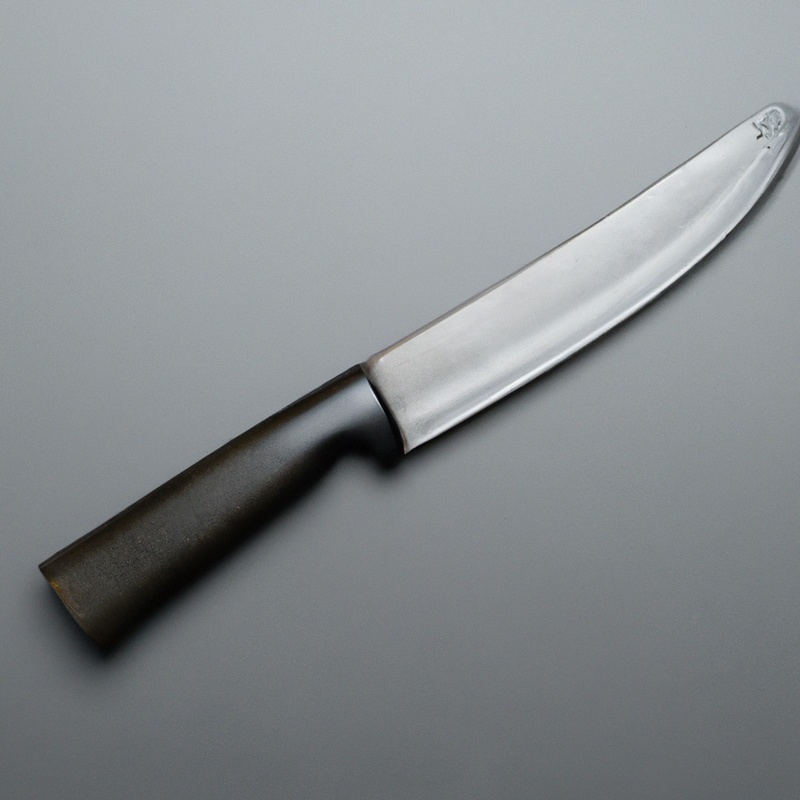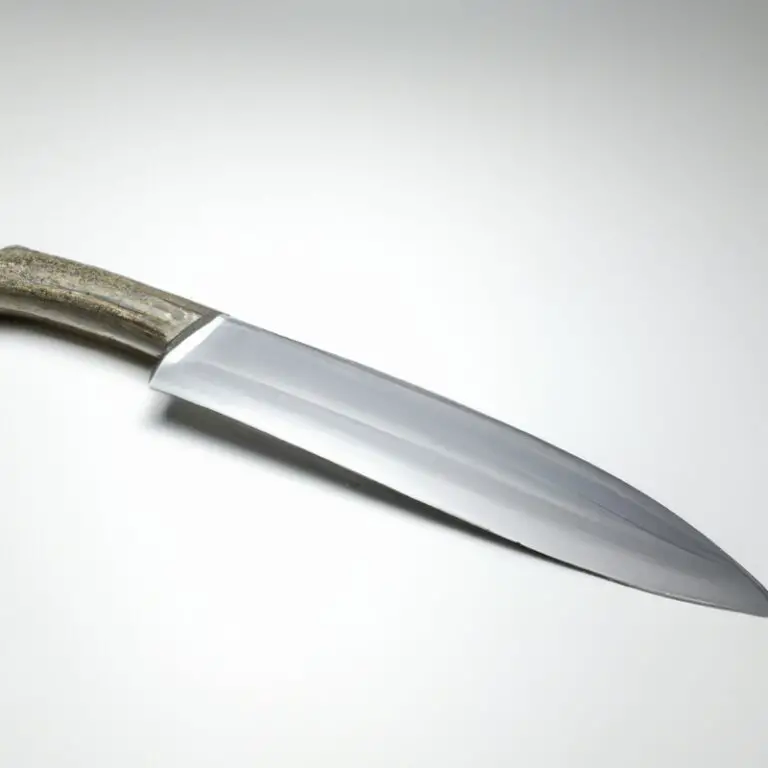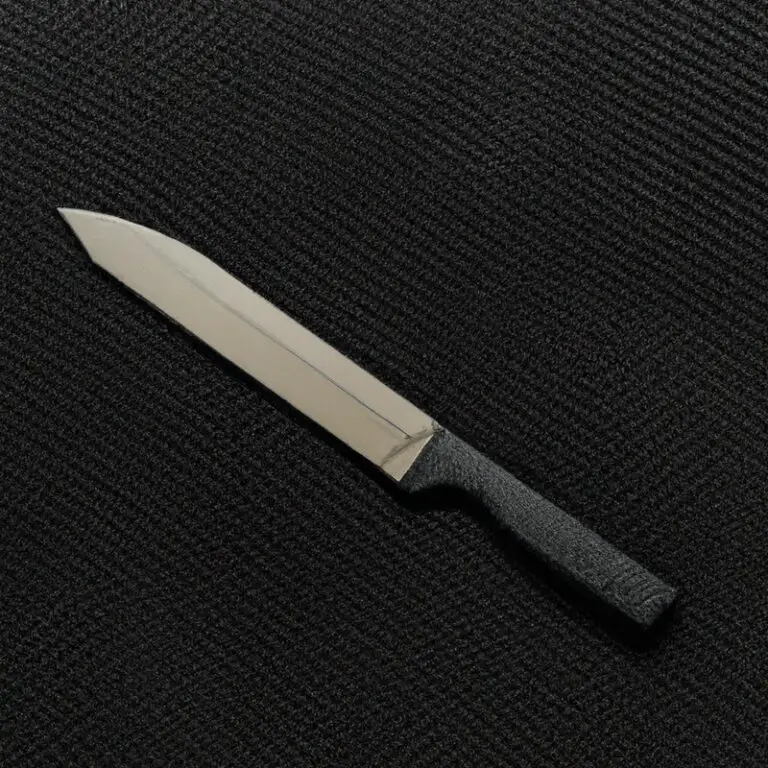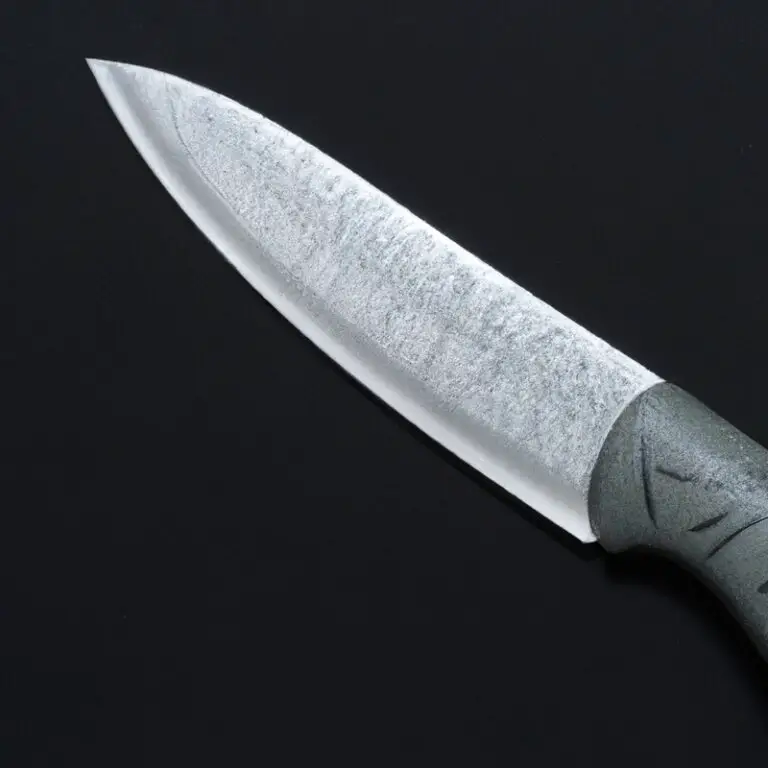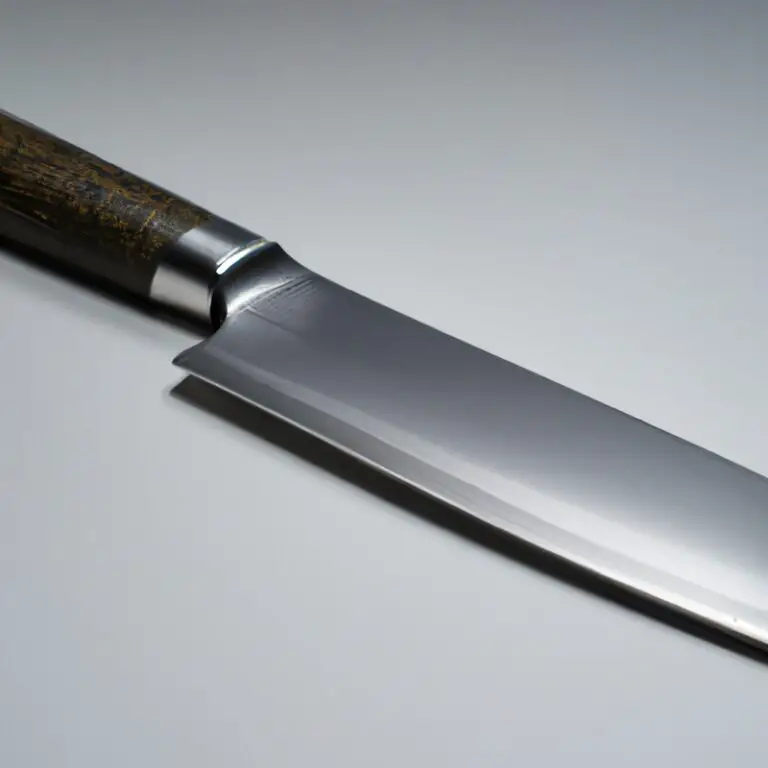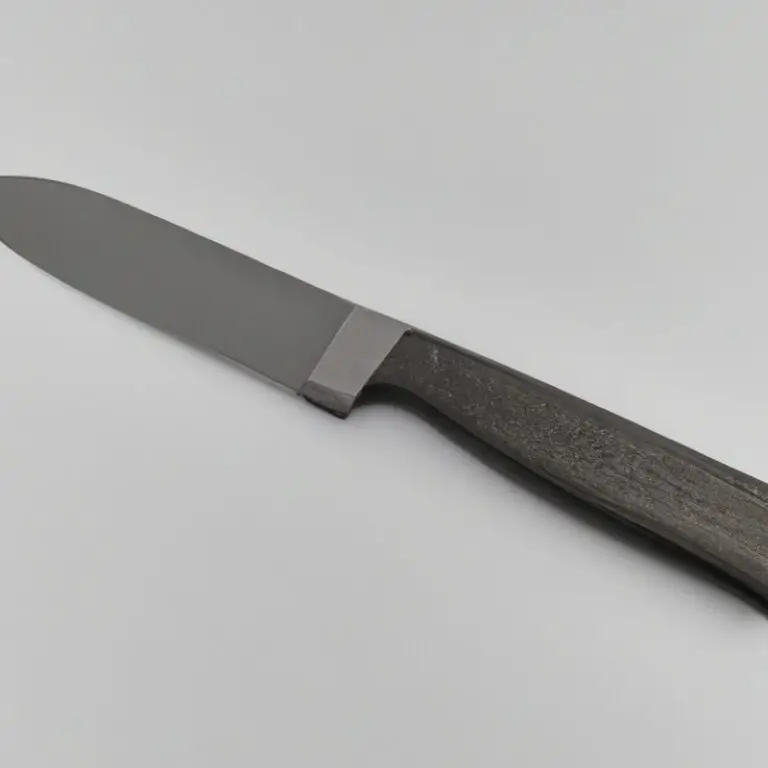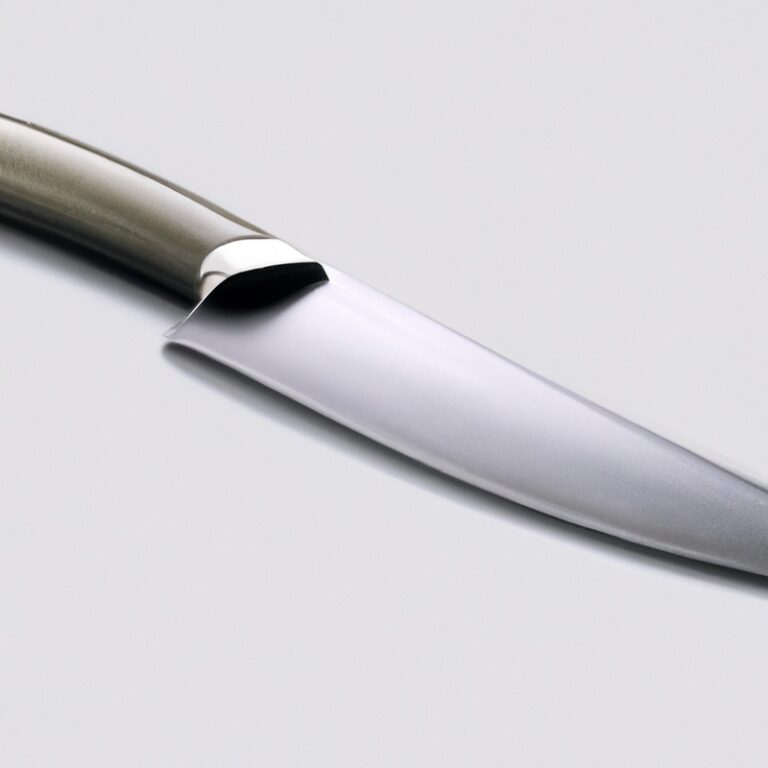How To Select The Right Grit Combination For Sharpening Gyuto Knives With Stones? Expert Tips
Key Takeaways:
- The right grit combination is crucial for sharpening your Gyuto knives with stones.
- Understanding the grit scale and its impact on sharpening is essential for knife maintenance.
- Using a coarse grit to shape your knife, a medium grit to refine the edge, and a fine grit to polish it, is a recommended approach.
- Take your time and practice to perfect your sharpening technique and maintain the quality of your knives.
Imagine slicing into a fresh tomato with a dull knife – the result can be disappointing and frustrating. This is where the science of sharpening comes into play, and the right grit combination can make all the difference.
In this article, we’ll go over the basics of sharpening Gyuto knives with stones, including the different grit ranges and how to properly use them.
We’ll also explore the advantages of fine grit and the ultimate grit combination strategy for optimal sharpness. Get ready to hone your skills and master the art of sharpening your Gyuto knives to peak performance.
| Grit Range | Use | Pros | Cons |
|---|---|---|---|
| 1000-2000 | Coarse grit for repairing chips or resetting the edge | Removes material quickly, good for heavily damaged knives | Leaves deep scratches, requires more skill to use effectively, not suited for regular sharpening |
| 3000-5000 | Medium grit for regular sharpening | Removes scratches from coarser grits, produces a sharp edge for most tasks | Requires regular refreshing to maintain sharpness, may not be fine enough for delicate tasks |
| 6000-8000 | Fine grit for polishing and refining the edge | Produces a mirror-like finish, suitable for delicate tasks, extends time between sharpening | Not suitable for heavy damage repair, requires more time and skill to use effectively |
Understanding Gyuto Knives: How the Right Grit Combination Can Make All the Difference
The grit combination used for sharpening gyuto knives plays a crucial role in achieving optimal sharpness and maintaining the knife’s performance. Coarse grits are ideal for fixing chips and nicks, while medium grits make the blade sharper, and fine grits provide a polished edge.
A combination of coarse, medium, and fine grits is the ultimate strategy for gyuto knife sharpening.
Always follow proper technique when sharpening, and consider the material and abrasive properties when choosing a water stone. Honing regularly and properly maintaining your gyuto knives will extend their lifespan and sharpness.
The Science of Sharpening: Basic Grit Ranges and Their Uses for Gyuto Knives
When it comes to sharpening Gyuto knives with stones, understanding the science of sharpening and the basic grit ranges is important. Grit refers to the size of the abrasive particles on a sharpening stone, and it determines how much metal is removed and how sharp the edge becomes.
The basic grit ranges for sharpening stones are coarse, medium, and fine.
Coarse grits, typically ranging from 120 to 800, are used to remove chips and reshape damaged edges. Medium grits, ranging from 1000 to 3000, are used to refine the edge and achieve optimal sharpness.
Fine grits, ranging from 4000 to 8000 or higher, are used for honing and polishing the edge to a razor-sharp finish.
When sharpening a Gyuto knife, it’s important to start with a coarse grit to remove any nicks or chips in the blade edge. After that, use a medium grit to refine the edge and achieve sharpness.
A fine grit can be used for honing and polishing the edge.
The grit combination used will depend on the condition of the knife’s edge and the desired level of sharpness. In summary, the basic grit ranges for sharpening stones are coarse, medium, and fine.
Coarse grits are used for reshaping damaged edges, medium grits are used for refining the edge and achieving optimal sharpness, while fine grits are used for honing and polishing the edge.
Understanding this science is essential for sharpening Gyuto knives effectively.
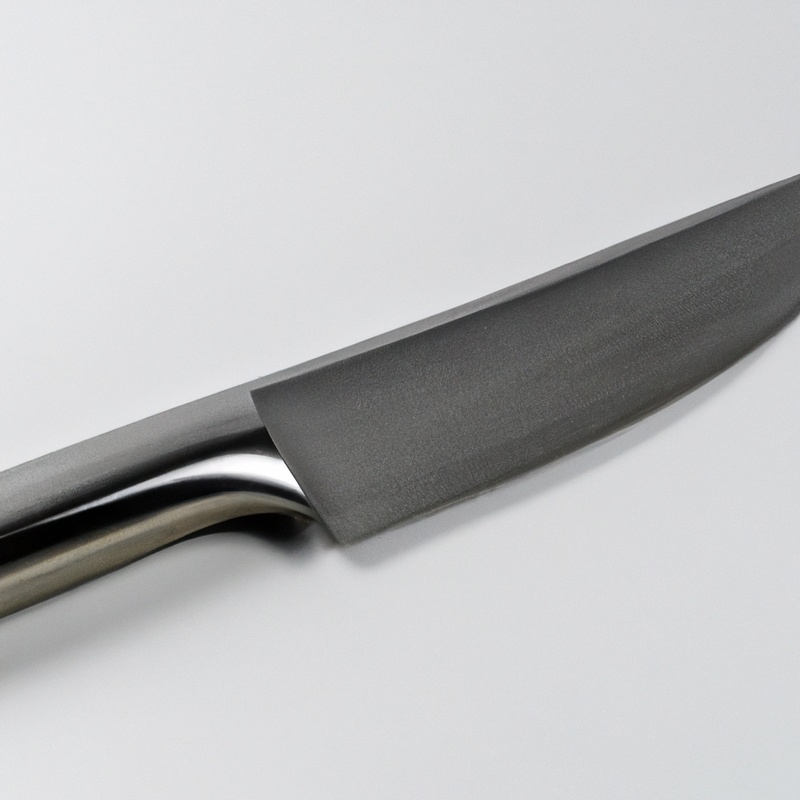
Mastering the Coarse Grits: Strategies for Effective Use in Gyuto Knife Sharpening
Mastering the coarse grits is necessary to achieve the desired sharpness for your Gyuto knives. When using coarse grits, apply light pressure to avoid damaging the blade’s edge and ensure a consistent angle throughout the sharpening process.
Additionally, ensure the stone remains wet and lubricated to prevent the blade from overheating and becoming damaged.
Move the blade in a circular motion for efficient sharpening. Once the sharpening is complete, use a honing rod to refine the edge, and then progress to medium and fine grits for added sharpness.
Remember to clean and maintain your stones after each use for optimal effectiveness.
The Power of Medium Grits: Achieving Optimal Sharpness for Gyuto Knives
Medium grits, typically ranging from 1000 to 3000 grit, are crucial for achieving optimal sharpness in Gyuto knives. These grits are responsible for removing the scratches left from coarser grits and refining the blade’s edge to a razor-sharp finish.
The even scratches created by medium grits are necessary for the subsequent fine grits to work their magic, honing the blade to peak performance.
It is essential to use consistent strokes and maintain a steady angle while using medium grits to ensure even sharpening and avoid overgrinding the blade. Remember to thoroughly clean your knife after each grit and use a light touch when switching to finer grits.
With the power of medium grits, you can achieve the ultimate sharpness and precision for your Gyuto knife.
The Fine Grit Advantage: Honing Your Gyuto Knife to Peak Performance
The fine grit is the last step in sharpening your Gyuto knife and is crucial to achieving the ultimate sharpness. Using fine grit stones can polish the edge of your knife, removing any remaining burrs or imperfections left by coarse and medium grit stones.
This process also helps to refine the edge, resulting in a sharper and smoother blade.
By honing your Gyuto knife with a fine grit stone, you can achieve a razor-sharp edge that will enhance the performance of your knife, enabling cleaner cuts, precise slicing, and dicing. It’s essential to note that honing your knife with a fine grit stone does not replace regular maintenance or sharpening.
Instead, it’s an additional step that enhances the knife’s performance and extends its sharpness.
Divide and Conquer: The Ultimate Grit Combination Strategy for Gyuto Knife Sharpening
Divide and Conquer is a popular grit combination strategy for sharpening Gyuto knives. This technique involves using coarse grits to remove chips and dull spots, then moving to medium grits to refine the edge, and finally finishing with fine grits for a polished edge.
By breaking up the sharpening process into smaller stages, you can achieve a sharper edge with less effort.
Remember to make sure all scratches from previous grits are removed before moving to the next grit. The Divide and Conquer method is a great way to achieve optimal sharpness for your Gyuto knife.
Choosing the Right Water Stone for Gyuto Knives: Material and Abrasive Considerations
To choose the right water stone for Gyuto knives, you need to consider the material and abrasive used in the stone. The most popular materials are synthetic, natural, and ceramic.
Synthetic water stones are affordable and readily available, while natural stones provide a smooth and consistent finish.
Ceramic stones are highly durable and provide an efficient sharpening process. For abrasives, choose between diamond, aluminum oxide, and silicon carbide.
Diamond abrasives offer a fast sharpening process, while aluminum oxide is perfect for removing minor nicks.
Silicon carbide is ideal for sharpening harder types of blades. Take into account your specific sharpening needs and preferences when choosing a water stone for your Gyuto knife.
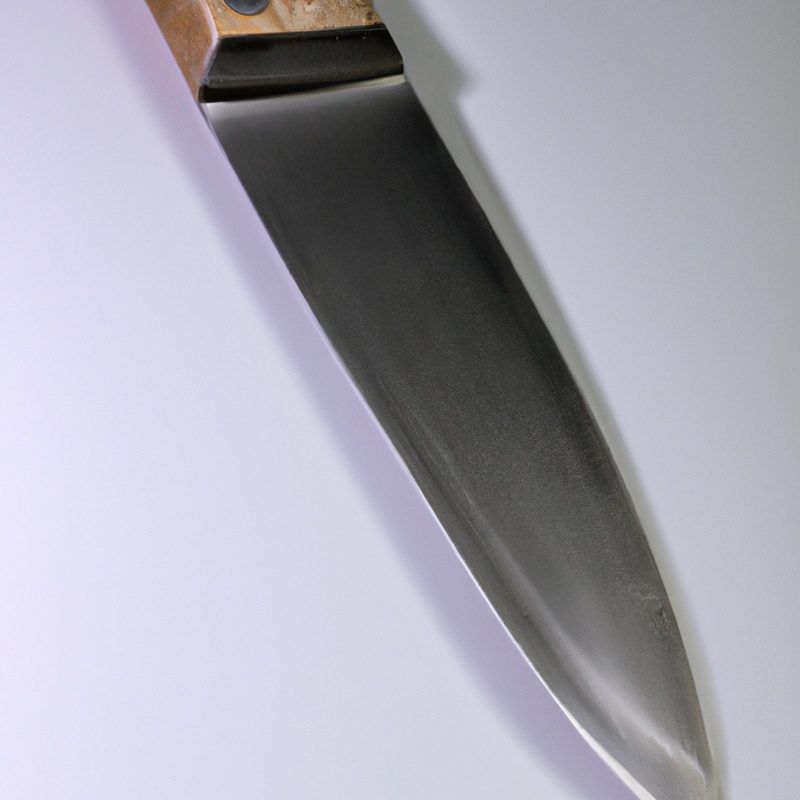
Proper Technique for Sharpening Gyuto Knives with Stones: From Preparation to Finishing
Proper technique is essential when sharpening Gyuto knives with stones. To begin with, gather the necessary tools, water stone, and lubrication.
Soak the water stone in water for at least 10-15 minutes.
Once it’s ready, place it on a non-slip surface and add a few drops of lubrication. Hold the knife with a 15-degree angle and start from the coarse grit to the fine grit stone.
Maintain the same angle, use light pressure, and ensure that the blade’s entire edge has been sharpened.
Use a honing rod to hone the blade’s edge and remove any burrs that may have formed during the sharpening process. Finally, rinse the blade and dry it before use.
With proper technique and patience, you can achieve and maintain a razor-sharp Gyuto knife.
Honing Tools for Gyuto Knives: Debunking the Myths and Finding the Right Fit
When it comes to honing tools for Gyuto knives, there are many myths and misconceptions that can make it difficult to find the right fit. One of the biggest myths is that a honing rod can be used to sharpen a Gyuto knife.
However, honing rods are designed to re-align the edge of a knife, not sharpen it.
To sharpen a Gyuto knife, you will need to use either a sharpening stone or an abrasive sharpening tool. Sharpening stones come in many different materials, including natural stones, synthetic stones, and diamond stones.
Each material offers unique advantages and disadvantages, so it’s important to choose the right one for your needs.
It’s also important to choose the right grit combination when sharpening your Gyuto knife. Coarse grits are used for repairing chips and restoring the edge of a dull knife, while medium grits are used for general sharpening and maintenance.
Fine grits are used for honing and refining the edge of a sharp knife for optimal performance.
When selecting honing tools for your Gyuto knife, it’s important to do your research and choose a reputable brand that offers high-quality products. Avoid cheap knock-offs and gimmicky products that promise quick and easy sharpening, as these are often ineffective and can damage your knife.
In summary, honing tools for Gyuto knives are an important investment for anyone who values a sharp and precise cutting edge.
By debunking the myths and finding the right fit, you can ensure that your Gyuto knife performs at its best and lasts for years to come.
Getting the Most Out of Your Gyuto Knives: Maintenance Tips for Long-Lasting Sharpness
To get the most out of your Gyuto knives and maintain their sharpness for longer, you need to adopt proper maintenance practices. These may include:
- Regular cleaning – After use, clean the blade with warm, soapy water and a soft sponge. Avoid using abrasive materials or harsh detergents that may damage the knife.
- Sharpening frequently – A sharp knife is safer and more efficient. Use a sharpening stone at least once a month, depending on the frequency of use.
- Adopt proper storage habits – After cleaning and drying, store your knives in a safe and dry place. Avoid stacking them with other metal utensils that may scratch the blade.
- Avoid heavy-duty tasks – While Gyuto knives are versatile and durable, they are not designed for heavy-duty tasks like chopping through bones or frozen foods. Use specialized knives for such tasks.
Adopting these simple tips can help you maintain the sharpness of your Gyuto knives and prolong their lifespan.
Final Verdict
Sharpening your Gyuto knife using stones can be a simple and worthwhile task when you fully understand the importance of grit combinations. By utilizing the basic grit ranges and mastering the coarse, medium, and fine grits, your knife can achieve optimal sharpness for precise and effortless cutting.
Additionally, choosing the right water stone depends on the material and abrasive considerations.
With proper technique and honing tools, your Gyuto knife can maintain its sharpness for prolonged use. Remember, the key is to divide and conquer with your ultimate grit combination strategy.
By following these tips and techniques, you can confidently choose the right grit combination for sharpening your Gyuto knife and enjoy its long-lasting sharpness.
Trust your expertise, and your knife will trust you.

